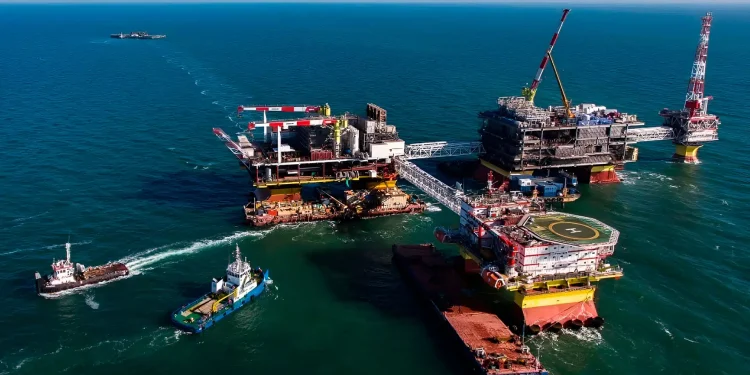LUKOIL Faces Logistics Challenge in Kazakhstan Project Due to Caspian Sea Shallowness
KazMunayGas (“KMG“) and LUKOIL will build a channel in the Caspian Sea to develop the Kalamkas-Sea and Khazar fields. This is stated in the project participants’ environmental impact assessment report.
The contract area is located in the Kazakh sector of the Caspian Sea, 120 km southwest of the Kashagan field. The Kalamkas-Sea field was discovered in 2002, and Khazar in 2007. In 2023, PJSC LUKOIL and JSC NC KazMunayGas signed a number of agreements regarding the development of the Kalamkas-Sea, Khazar, and Auezov subsurface area in Kazakhstan’s Caspian sector. The parties signed a purchase and sale agreement for a 50% stake in the charter capital of Kalamkas-Khazar Operating LLP and an agreement on financing terms for the operator’s activities.
The Kalamkas-Sea–Khazar project provides for the production of oil and associated gas at offshore facilities using stationary offshore production platforms. Marine operations will be supported by vessels delivering equipment, platform segments, personnel, fuel, chemical reagents, food, and other essential materials, and removing wastewater and production and consumption waste to onshore support bases.
“Due to the decline in the Caspian Sea level and the resulting shallowing in the Ural Saddle area, it is necessary to build a marine channel to access the Kalamkas-Sea and Khazar fields,” the documents explain.
At present, the subsoil user plans to develop a project for the construction of a navigation channel through the Ural Saddle to support field development. After delivery of the stationary platforms, the channel is not planned to be operated further.
The main route is located north of the Caspian Seal Reserve (“Kaspiy itbalyty”) and has a length of 75.114 km, with an estimated dredged volume of 24.35 million cubic meters. The alternative route runs through the so-called Guryev fairway, with a length of 91.411 km and a dredging volume of 34.385 million cubic meters.
“Constructing the marine channel along this route presents several constraints. The Guryev fairway is currently used by vessels navigating from the Middle to the Northern Caspian. Channel excavation would restrict this navigation route. Additionally, the presence of dredged material dumps along the channel significantly increases the risk of groundingfor vessels maneuvering before the channel is completed,” the construction initiators note.
Dredging operations are scheduled for the navigation seasons of 2026–2029, with work carried out from April to November each year.
Commercial production of first oil at the Kalamkas-Sea and Khazar fields is planned for 2028–2029. Total recoverable reserves are estimated at 48.5 million tonnes of oil and 19 billion cubic meters of gas. According to KMG, expected production is around 4 million tonnes per year (80,000 barrels per day). The production plateau is projected to last at least five years. Preliminary estimates by the Kazakh company put investment volume at approximately $6.4 billion.
The final investment decision on the Kalamkas-Sea, Khazar, and Auezov project will be made by the partners in 2025.











